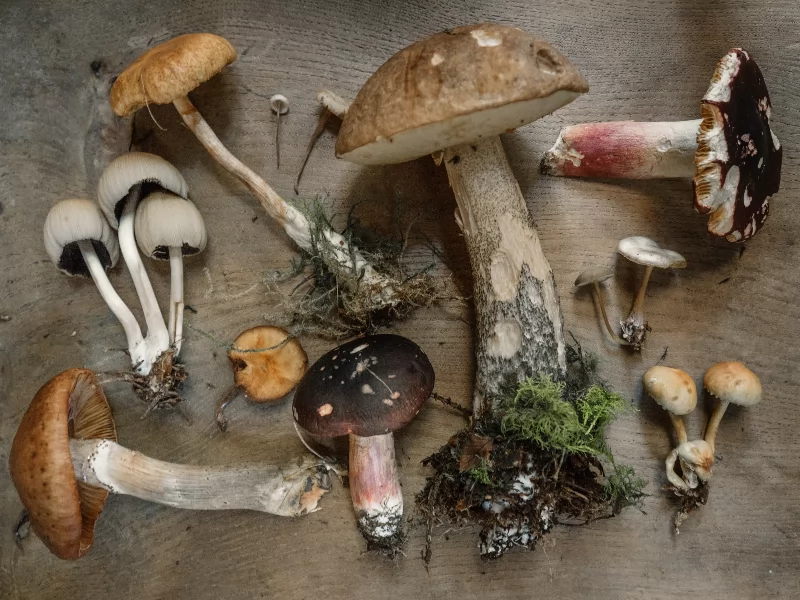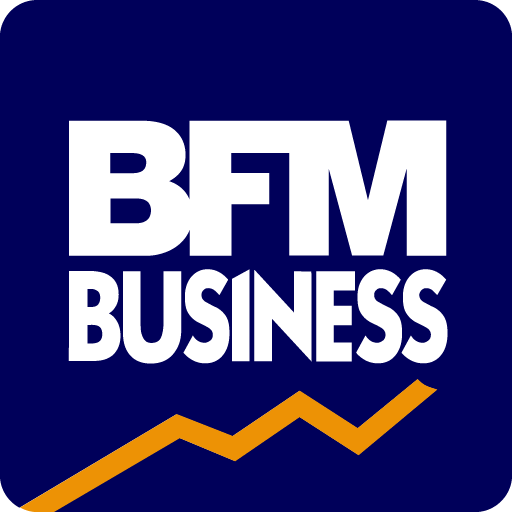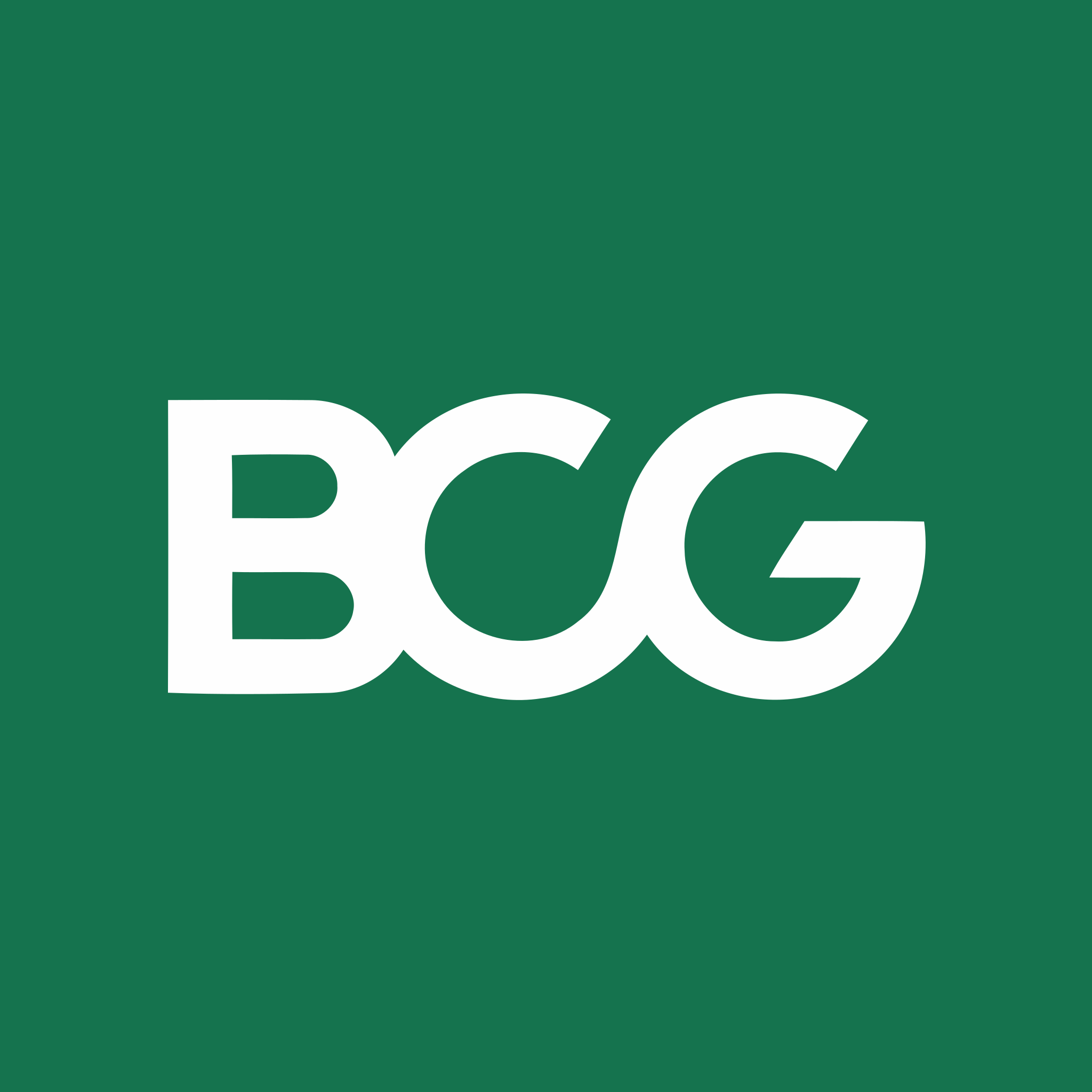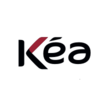Detailed content of our market study
 Inforamtion
Inforamtion
- Number of pages : 35 pages
- Format : Digital and PDF versions
- Last update :
 Summary and extracts
Summary and extracts
1 Market Overview
1.1 Definition and scope of the study
Contrary to popular belief, the mushroom is not a plant and is its own biological kingdom. The mushroom we know is the visible part of a much more complex organism growing underground. There are nearly a million species, which can be classified into different families:
- Edible
- Poisonous
- Hallucinogens
In the food context, edible mushrooms are valued for their unique taste and nutritional benefitsThe most common varieties include champignons, porcini and shiitake, each with unique taste and texture characteristics. Nutritionally, mushrooms are a valuable source of protein, fiber, vitamins and minerals. They are also rich in antioxidants and can contribute to health benefits such as strengthening the immune system. In the kitchen, mushrooms are valued for their versatility and can be prepared in a variety of ways.
In 2023 the global mushroom market reached a global value of 61.33 billion dollars. Between 2023 and 2028 sustained growth of the industry is expected with a compound annual growth rate (CAGR) of 8.5 percent, under which the global mushroom market could reach a total value of 95.23 billion dollars. Between 2017 and 2022, annual global mushroom production grew by 21.4%, from 39.81 million tons in 2017 to 48.34 million tons in 2022. In 2022, China contributed 94% of the global mushroom and truffle production, with a total production of 45.43 million tons out of 48.34 million tons total.
As for the European Union, between 2017 and 2022, mushroom production appears to have declined. During the period analyzed, total production decreased from 115,600 tons to 109,800 tons, marking a contraction of 5.0 percent. However, while between 2017 and 2021 there is a growth in production, amounting to 8.8%, between 2021 and 2022 production drops by 12.7%.
1.2 The global market
In ****, the global mushroom market reached a global value of $**.** billion. Between **** and ****, the industry is expected to grow sustainedly with a compound annual growth rate (***) of *.* percent, under which the global mushroom market could reach a total value of $**.** billion.
Mushroom Market World, ****-****, in billions of dollars TheBusinessResearchCompany
Between **** and ****, annual global mushroom production grew by **.* percent, from **.** million tons in **** to **.** million tons in ****. In ****, China contributed **% of the global mushroom and truffle production, with a total production of **.** million tons out of **.** million tons total. Mushroom and truffle production World, ****-****, in million tons FAOstat European Union As for the European Union, between **** and ****, mushroom production appears to have declined. During the period analyzed, total production decreased from ***,*** tons to ***,*** tons, marking a contraction of *.* percent. However, while between **** and **** there is a growth in production, amounting to *.*%, between **** and **** production drops by **.*%. Mushroom and truffle production European Union, ****-****, in thousands of tons FAOstat Finally, in terms of the main producers in the European Union, Poland collects **.* percent of total production in ****. This is followed by the Netherlands and Spain, with production shares of **.* percent and **.* percent. France, Germany and Italy contribute *.*%, *.*% and *.*% of the total, ...
1.3 The Italian market
As for Italy, between ***** and **** the total volume of harvested mushroom production declined by *.*%, from **** tons to **** tons. The decline appears to be constant throughout the three-year period and concentrated mainly between **** and **** (***).
Mushroom harvesting production Italy, ****-****, in thousands of quintals Istat
With regard to the value of sold production of mushrooms and truffles (***). Value of production sold of mushrooms and truffles (***) Italy, ****-****, in millions of euros Istat
1.4 Import and Export Analysis
For the analysis of trade flows out of and into Italy, all product types related to fresh, dried and packaged mushrooms are analyzed.
Italy is positioned in the global landscape as a net importer of mushrooms: as shown by the trend in the export coverage index, determined by the ratio of exports to imports multiplied by ***, between **** and **** this has always been less than *** percent (***). Specifically, during the period analyzed, the total value of exports increased from $**.** million to $***.** million, marking a growth of **.* percent. As for imports, these saw an increase greater than exports and amounting to ***.* percent, rising from $**.** million to $***.** million.
Import - Export fresh, dried and packaged mushrooms Italy, ****-****, in million dollars and % Uncomtrade
In terms of trade outflows from Italy, the United States, Germany, and France represent the country's main trading partners, together collecting ** percent of total Italian exports. They are followed by the United Kingdom, Switzerland and Spain, with shares of *.* percent, *.* percent and *.* percent respectively. The Netherlands collects *.* percent of the total while the other countries individually do not reach * percent of the total value, indicating a marked fragmentation of Italian mushroom export destinations. Main export destination countries for fresh, dried and packaged ...
1.5 The consequences of the Russian-Ukrainian conflict
The outbreak of the Russian-Ukrainian conflict in February **** has led to, among other things, a general increase in the price index. The agribusiness sector is particularly affected by the effects generated by the conflict. Between January **** and January ****, the consumer price index for roots, bulbs, mushrooms, and other vegetables increased by **.* points, representing a price increase of **.* percent. Compared with ****, the increase in consumer prices is **%.
Consumer price index for roots, non-starchy bulbs, mushrooms and other vegetables Italy, ****-****, base ****=*** Istat
The increase in consumer prices is nothing more than the increase in producer prices. Between January **** and September ****, the producer price index for fresh vegetables (***). Compared to ****, the increase in producer prices stands at **.* percent. Producer price index for fresh vegetables Italy, ****-****, base ****=*** Istat
2 Demand analysis
2.1 Overview of demand
In order to analyze the demand for mushrooms in Italy, apparent consumption, determined by: production + import - export, is analyzed.
Between **** and ****, apparent consumption of mushrooms in Italy appears to be growing. During the period analyzed, the volume of apparent consumption increased from **,*** tons to **,*** tons, marking a growth of *.*%. The outbreak of the pandemic in **** led to a decline in apparent consumption (***).
Volume of domestic demand for mushrooms and truffles Italy, ****-****, in thousands of tons FAOstat
Regarding the annual changes in the value and volume of the production sold of mushrooms and truffles (***).
Annual change in the value and volume of production sold of mushrooms and truffles (***) Italy, ****-****, % Istat the graph represents the proportion of searches for a given term in a given region in a given time period, compared to when it was most searched (***). Thus, a value of ** means the keyword was used less often in the region, and a value of * means there is not enough data for that keyword. This graph shows that search interest is stable, but cyclical. The peaks occur in the fall period (***), coinciding with the mushroom picking period. In contrast, the lowest values are recorded in the summer period, especially ...
2.2 Geographical distribution of demand
In order to visualize the geographical distribution of demand, two maps were created son the geographical distribution of average monthly household spending on mushroom purchases and the geographical distribution of the Google Trends interest index.
Regarding the first aspect, in **** the North of the country has the highest expenditure on the purchase of mushrooms (***) averaging *.** euros per household. This is followed by the Center, where households spend an average of *.** euros per month. Finally, in the South, average monthly household spending stands at *.** euros.
Regarding the distribution of the Google Trends interest index, there is a significant change from the case of spending. In fact, between **** and **** the Islands and the South of the peninsula have the highest values, averaging ** and **. This is followed by the Northwest and the Center, with values of ** and **, respectively. Finally, in the Northeast, the index of interest is ** over the period analyzed.
2.3 Alternative uses of mushrooms: mycotherapy or fungal therapy
Fungal therapy is a form of alternative medicine derived from traditional Chinese medicine and is based on the use of certain types of fungi to treat and prevent disease Fungal therapy is also used in other traditional Eastern medicines such as Ayurveda. The mushroom kingdom-or fungi, if you will-includes many genera, and therefore species. These can be divided into two broad categories: higher fungi, also known as macro fungi or macro fungi (***) and lower fungi, also known as micro fungi or micro fungi .
Fungal therapy uses certain macroscopic fungi that are believed to have many beneficial properties for the body.
The goal of mycotherapy is to treat and prevent different kinds of diseases through the use of certain types of macro fungi, referred to as healing fungi or medicinal fungi. So it can be said that fungal therapy has the same goals as phytotherapy, while herbal medicine uses herbs and plants. Leaving aside the various uses of fungal therapy in traditional Eastern medicine, in the Western world it is often used primarily (***) to strengthen the immune system, rebalance and improve the health of the body. A practice not accepted by modern medicine and, therefore, neither its supposed efficacy nor its safety ...
3 Market structure
3.1 Geographical distribution of production
The map below shows the geographical distribution of mushroom production in Italy in ****. As shown, the Northeast of the country alone collects almost */* of the total national production (***). This is followed by the Center and the South with production shares of **.*% and **.*% of the total, respectively. Finally, the Islands and the Northwest have production shares of *.* percent and *.* percent of the national total, respectively.
3.2 The main manufacturers
A list of major mushroom producers in Italy is offered below:
Consorzio Funghi di Treviso: founded in ****, it represents the leading production hub for cultivated mushrooms in Italy. it consists of a set of ** different farms located in the provinces of Treviso, Padua and Belluno. This consortium, recognized by the European Community, is a member of the "Consorzio Fungo Italiano Certificato," an initiative aimed at enhancing and promoting mushrooms grown exclusively in Italy, with a production chain certified at every step to ensure maximum food safety. In terms of production, the Treviso Mushroom Consortium is mainly dedicated to the cultivation of several varieties of mushrooms, including Agaricus bisporus (***), Pleurotus Ostreatus and Pleurotus cornucopiae. These species are grown in controlled environments with state-of-the-art production systems operated by computer technology that allows automatic control of various parameters such as humidity, temperature, CO*, and the amount of water in the crops. The consortium has an approach focused on quality, innovation, training and respect, making it a benchmark in the mushroom sector in Italy. With an annual production of about **,*** tons of mushrooms, it also operates processing and logistics areas covering *,*** square meters, as well as cold storage facilities covering *,*** square meters.
Fungamico: was founded ...
3.3 Production methods
The types of mushrooms that can be cultivated are diverse, and not all species of mushrooms are suitable for cultivation. To understand which mushrooms can be cultivated, we need to introduce two main categories of mushrooms: saprophytic mushrooms and symbiont mushrooms. It is much easier to cultivate saprophytic mushrooms because they live on residual organic matter in a state of decomposition, and for these it is enough to recreate the ideal microclimate for their survival and growth. For symbiotic fungi, on the other hand, it is necessary, in addition to finding the right habitat and nutrition, to recreate the existing relationship with the host plant.
Fungi, or mycetes, are not part of the plant kingdom and are divided into two categories: macromycetes, which are those commonly consumed by humans, and micromycetes, which, on the other hand, are not perceptible to the naked eye (***). Only for the first category is it possible to speak of cultivation.
Each type of fungus then has specific production methods; horse manure (***), which account for the remaining ** percent. Minor but still widespread species are the cardoncello, poplar and cornucopia.
As for porcini, cultivation is very different and quite complicated. It is obtained only through mycorrhization, a technique ...
4 Supply analysis
4.1 Mushroom species
There are hundreds of thousands of mushroom species worldwide, however, as mentioned several times in this study, very few of them are currently cultivated. The cultivated and most valued varieties turn out to be (***)
Champignon or prataiolo (***), also called Portobello, characterized by its hazelnut-colored cap, is the most suitable for risottos, but it is also delicious breaded. Gelone or oyster mushroom (***) has a distinctive shape, which has made it also called elephant ear or oyster mushroom. Large and with a scent reminiscent of walnut, it has an unmistakable taste and very firm, firm, white flesh, making it ideal for grilling or breading. Pipparello or poplar mushroom (***) a very aromatic and tasty mushroom used for stewed or trifoliated cooking or in pasta fillings. Moss mushroom (***) is widely cultivated in Asia; in Italy it is imported almost exclusively from Vietnam, in brine, to be used mostly in pickles. Shiitake (***) Nameko (***) this species is neither cultivated nor can be found in the woods in Italy. It is imported frozen from Asian countries and then sold mainly in mixed mushroom packages.
Very widespread is the use of mushrooms outside the kitchen, some of the most cultivated types for even non-food use are:
Coprinus comatus : also ...
4.2 Price Analysis
In order to analyze the prices related to the mushroom market in Italy, the trends of the producer price index for mushrooms between **** and **** and that of wholesale prices for some product types in major Italian cities are analyzed.
Regarding the first aspect, between **** and **** the producer price index for mushrooms and truffles in Italy shows substantial growth. Over the period analyzed, the value of the index rose from **.* in **** to ***.* in ****, marking an increase of ** points. This means that over the *-year period analyzed, production costs increased by an average of **%.
Producer price index for mushrooms and truffles Italy, ****-****, base ****-****=*** FAOstat Analyzing wholesale prices for white prataioli mushrooms (***) in fruit and vegetable markets in major Italian cities shows a general increase in prices. Between **** and ****, the increase recorded in the cities of Milan, Rome, Bologna, Rome and Naples averages **.* percent. Specifically, the increases recorded in the various cities are as follows: Milan: **.*% Turin: **.*% Bologna: **.*% Rome: **.*% Naples: **.*"
Wholesale prices for white prataioli mushrooms, breakdown by market Italy, ****-****, in euros/kg Osservaprezzi
With regard to Pleorotus Ostreatus mushrooms (***), there are increases in all the cities analyzed, with the exception of the city of Bologna, where the average wholesale price ...
4.3 New supply trends:
Recent innovations in protein production from fungi are significant. Mushrooms, particularly mycelium, are being explored as a sustainable and efficient source of protein. This has led to the development of various food products that use fungal protein as a meat substitute, offering a texture and taste similar to traditional meat, but being environmentally friendly. This approach not only provides a new source of protein for dietary needs, but also contributes to sustainable food production practices. Sustainable Bioproducts is an innovative biotechnology company that focuses on alternative protein production using mushrooms. They discovered a particular type of mushroom in a supervolcano in Montana that has unique characteristics for protein production. This fungus can grow in extreme conditions and produces a complete source of protein, including all essential amino acids. The company uses a fermentation process to grow these mycoproteins sustainably, aiming to offer an alternative and sustainable solution to meet the growing global demand for protein.
In ****, the global protein plant-based market reached a total value of $**.** billion. Sustained growth of this market is expected in the near future. A compound annual growth rate (***) of **.* percent is projected for the period ****-****, under which the global plant-based protein market could reach a ...
5 Regulations
5.1 Regulation
The mushroom market, as with all other agribusiness products, is regulated by both national and European laws. The legislative systems are aimed at ensuring the quality, origin and safety of the products put on the market. As far as the mushroom market is concerned, the main legislative aspects are:
Law No. *** of April *, **** (***): set the rules for the activity of mushroom cultivation, making it to all intents and purposes an agricultural entrepreneurial activity. Such entrepreneurs fall into the category of taxpayers taxed on the basis of land income under Presidential Decree No. *** of September **, ****. Law No. *** of August **, ****: framework regulations on the collection and marketing of fresh and preserved epigean mushrooms. Presidential Decree No. *** of July **, ****: regulations governing the collection and marketing of fresh and preserved epigean mushrooms. Commission Implementing Regulation (***) ****/**** of the European Parliament.
5.2 Collection
Regulations on mushroom picking vary from region to region, in fact depending on the region you may need to have a special permit to pick and there may be limits on the amount of mushrooms that can be picked per day.
At the national level, however, there are laws to comply with:
No more than three kilograms of mushrooms can be harvested each day (***) Amanita caesarea cannot be harvested while it is still closed One cannot use rakes hooks or other tools that can ruin the soil and the area where the mushrooms grow Mushrooms must not be broken, even if they are poisonous or if you do not want to pick them Harvested mushrooms must be transported in contents that will let the spores spread: plastic is prohibited Mushrooms cannot be harvested in areas designated as nature reserves
Below is a reminder of the various regional laws:
Collection of epigeous mushrooms - ABRUZZO REGION - updated April ****
Collection of epigeous mushrooms - BASILICATA REGION - updated April ****
Collection of epigeal mushrooms - AUTONOMOUS PROVINCE OF BOLZANO - updated April ****
Collection of epigeous mushrooms - CALABRIA REGION - updated April ****
Collection of epigeous mushrooms - CAMPANIA REG ION - updated April ...
6 Positioning of actors
6.1 Segmentation
- Consorzio Funghi di Treviso
- Fungamico
- Funghidea
- Società Agricola Porretta s.r.l
- Fungo Puglia s.c.a.r.l
- Micotec s.r.l
All our studies are available online in PDF format
Take a look at an example of our research on another market!
 Choosing this study means :
Choosing this study means :
Access to more than 35 hours of work
Our studies are the result of over 35 hours of research and analysis. Using our studies allows you to devote more time and added value to your projects.
Benefit from 6 years' experience and over 1,500 industry reports already produced
Our expertise enables us to produce comprehensive studies in all sectors, including niche and emerging markets.
Our know-how and methodology enable us to produce reports that offer unique value for money.
Access to several thousand articles and paid-for data
Businesscoot has access to all the paid economic press as well as exclusive databases to carry out its market research (over 30,000 articles and private sources).
To enhance our research, our analysts also use web indicators (semrush, trends, etc.) to identify market trends and company strategies. (Consult our paying sources)
Guaranteed support after your purchase
A team dedicated to after-sales service, to guarantee you a high level of satisfaction. +44 238 097 0676
A digital format designed for our users
Not only do you have access to a PDF, but also to a digital version designed for our customers. This version gives you access to sources, data in Excel format and graphics. The content of the study can therefore be easily retrieved and adapted for your specific needs.
 Our offers :
Our offers :
the mushroom market | Italy
- What are the figures on the size and growth of the market?
- What is driving the growth of the market and its evolution?
- What is the positioning of companies in the value chain?
- Data from several dozen databases
5 reports pack (-15%) IT Italy
- 5 reports at €75.6 excluding VAT per study to choose from our Italian catalogue for 12 months
- Save 15% on additional studies purchased
- Choose to be refunded any unused credit at the end of the 12-month period (duration of the pack)
See the terms and conditions of the pack and the refund of unused credit.















